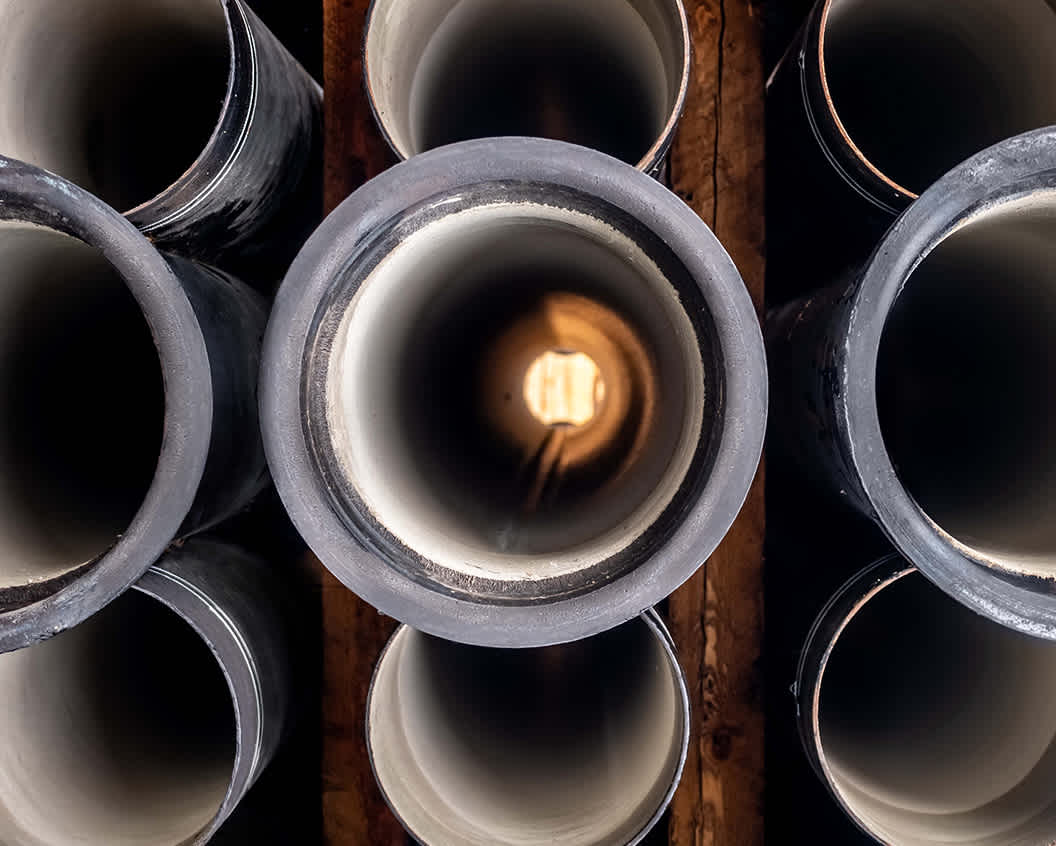Corrosion Control
Modern Ductile iron pipes are provided with corrosion control methods during installation, conforming to ANSI-AWWA C105 A21.5 Standard. Ductile iron pipes installed in corrosive environments with corrosion control methods are expected to service efficiently for at least a century.
Therefore, it is essential to differentiate between unprotected and protected iron pipes, lined and unlined iron pipes, gray cast iron and Ductile iron pipes. This can be achieved through a comprehensive and up-to-date inventory system that identifies assets’ age, size, pressure class, type of breaks, bedding conditions, and anticipated service life.
Condition assessment tools are mainly available to monitor the conditions of metallic pipes, such as gray iron, Ductile iron, steel, and concrete pressure pipes. Those tools include traditional visual inspection, soil corrosivity surveys, CCTV cameras inspections, acoustic velocity testing, electromagnetic testing, ultrasonic testing, and metallographic analysis. Monitoring aging iron pipes in service through condition assessment tools allows utilities to operate iron pipes efficiently by identifying areas in the system where immediate and future repairs may be required.

Asset Management Monitoring
Over two hundred years ago, engineers in North America installed cast iron pipes to create the nation’s first water infrastructure. The resilience and sustainability of iron pipes had stood the test of time. Today, many utilities in the U.S. and Canada are DIPRA Century Club members, still benefiting from the iron pipe in service for more than 100 years.
Historically, most cast iron water mains were installed without external corrosion protection, knowing that most North American soils are non-corrosive. On the other hand, cast iron pipes installed in corrosive environments without internal and external corrosion control require condition assessment and frequent repairs.
Modern Ductile iron pipes are provided with corrosion control methods during installation, conforming to ANSI-AWWA C105 A21.5 Standard. Ductile iron pipes installed in corrosive environments with corrosion control methods are expected to service efficiently for at least a century.
Therefore, it is essential to differentiate between unprotected and protected iron pipes, lined and unlined iron pipes, gray cast iron and Ductile iron pipes. This can be achieved through a comprehensive and up-to-date inventory system that identifies assets’ age, size, pressure class, type of breaks, bedding conditions, and anticipated service life.
Condition assessment tools are mainly available to monitor the conditions of metallic pipes, such as gray iron, Ductile iron, steel, and concrete pressure pipes. Those tools include traditional visual inspection, soil corrosivity surveys, CCTV cameras inspections, acoustic velocity testing, electromagnetic testing, ultrasonic testing, and metallographic analysis. Monitoring aging iron pipes in service through condition assessment tools allows utilities to operate iron pipes efficiently by identifying areas in the system where immediate and future repairs may be required.
Inspection and Testing
Most of the early stated condition assessment tools are not efficient on non-metallic pipes such as plastic pipes. Physical inspection and mechanical lab testing are required for plastic pipes, putting a more significant challenge on utilities in assessing the condition of plastic pipes nearing their end of service life, thereby forcing pipeline owners to either replace those plastic pipes or operate them on a run-to-failure basis.

